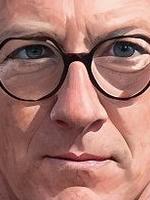


The foundation of the collaborative community framework discussed in the presentation is based on over 25 years of regional district collaboration via distance learning technologies and learning models. The recent pandemic has driven the community to significantly evolve the breath and scope of collaboration to address new challenges, including teacher shortages, requirements for entirely remote/virtual options for some students, and an increasing need for more flexible learning options for a growing number of students and schools.
Previously, community collaboration was primarily targeted to high school students attending in-person school. The evolved collaborative community framework is now redefining “student” to be any type of learner, including students of all ages and adult professional staff. The collaborative community has also grown past primarily synchronous video models between school buildings to providing learning to learners when and where it makes the most sense, broadening the locations, the technology form factors, and the timing of when/where/how learning takes place.
The purpose of this interactive session is to provide an overview of the collaborative community and virtual learning elements in this framework. Participant outcomes will include the following:
• Understand the virtual learning framework districts are using to grow instructional programs through deeper inter-district collaboration and through implementation of practices and supports that bring learning to students when and where it makes the most sense.
• Identify how and where elements of the framework can change strategic direction and instructional programs and practices in their own school.
• Understand several different instructional models focused on appropriate and equitable learning opportunities and experiences for students.
• Take collaborative and reflection activities utilized in the session back to their school/region as models for developing potential virtual learning solutions with stakeholders within their respective communities.
Participants in this interactive session will initially be guided through a community framework taking the best distance learning practices used in past collaborations and synthesizing them with more recently developed creative and innovative instructional approaches in virtual learning. Specific instructional and technology models will be profiled where schools and instructors in the community shifted their teaching to reach students when traditional methods were not appropriate, no longer an option, or required a change based on evolving student needs.
Session participants will have opportunities to reflect individually and together in small groups on how this framework can more permanently shift what learning environments can (and potentially should) look like in their respective schools. Participants will use digital collaboration tools to capture ideas to help build broader stakeholder capacity on how elements of the framework could look in their schools. These collaboration and reflection activities will provide participants with an opportunity to both build understanding and to model strategic planning practices that can subsequently be used with community stakeholders to further develop virtual learning solutions that fit within their respective school environments.
Our program is partnering with The Learning Accelerator (TLA – https://learningaccelerator.org/), a national non-profit promoting a vision for a future in which each student receives the effective, equitable, and engaging education they need to reach their full and unique potential. One of the virtual learning models outlined in this presentation (Cooperative Virtual Learning Academy, or CVLA) is participating in TLA’s most recent Virtual and Hybrid Learning Strategy Lab, a cohort of school systems exploring virtual structures for learning, with a goal of creating demonstrable change for others to learn from.
Resources developed by TLA that are strongly influencing our practices can be found as follows:
• Strategies for Virtual, Remote, and Hybrid Learning - https://practices.learningaccelerator.org/problem-of-practice#strategies-for-virtual-remote-and-hybrid-learning
• Report: Driving Quality in Virtual & Remote Learning – A framework for research-informed remote experiences for K-12 learners - https://practices.learningaccelerator.org/artifacts/driving-quality-in-remote-learning
• Digital Equity – https://practices.learningaccelerator.org/guides/digital-equity/introduction
• Real-Time Redesign - https://practices.learningaccelerator.org/guides/real-time-redesign/intro
Our program is also partnering with the HyFlex Collaborative at the University at Albany in Albany, New York (https://aatlased.org/hyflex-collaborative/). HyFlex Learning (https://www.hyflexlearning.org/) is a blended learning model originally developed by Dr. Brian Beatty at San Francisco State University. HyFlex provides both a classroom and at least one online participation option for participating students. Contemporary resources curated and developed by the Collaborative (https://aatlased.org/hyflex-collaborative/hyflex-resources/) are both reinforcing the importance of the next generation of learning promoted through our program and informing practices in our virtual learning models.